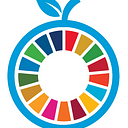Invisible livestock: the workers who carry our hopes of achieving ‘Zero Hunger’ on their backs
By Harry Bignell, Global External Affairs Officer at Brooke
Since its conception in 1945, the United Nations definition of livestock in food security policies encompassed only those animals that directly produce food, like cows and sheep.
In 2016, the Committee on World Food Security acknowledged the role of working animals, extending the definition of livestock to include animals that support food production through draught power, such as oxen, horses, buffaloes, camels, donkeys and mules.
And yet, despite this crucial milestone, here we are half a decade on still with critical gaps in global animal health systems that allow deadly pathogens a foothold, inadequate data on the economic contributions of livestock that would enable us to evidence their critical role, and a lack of inclusion of this crucial workforce in much food security policy and programming.
Now the world has reached a critical juncture.
The COVID-19 pandemic has raged for over a year causing drastic disruptions to global value chains and bringing food production to a grinding halt in places. The World Food Programme (WFP) estimated COVID-19 had resulted in an 82% increase in global food insecurity and WFP’s Executive Director David Beasley gave a grim projection that 2021 could be the worst humanitarian crisis year since the founding of the UN.
What then can be done to ensure that efforts to build back better do not make the same mistakes as before? How can we ensure that global health systems are robust enough to protect us from future pandemics, and global food systems resilient to withstand the strain even if they should hit?
The agricultural sector is the economic backbone of many low and middle income countries. Farming and cultivation contributes significantly to country’s GDP and employs many of the 800 million people of whom rely on working livestock.
In Kenya, agriculture in the form of smallholder farming contributes 33% of the national gross domestic product (GDP). A study from the Kenya Agriculture and Livestock Research Organisation found that owning a donkey allowed households to earn a mean income of KES 11,390.00 per month (equiv approx. £78) which was spent on essentials like food, schooling and agricultural inputs such as fertiliser and seed for production.
A participant from Tharuni’s Women Group, Kenya remarked in the Brooke Voices from Women report, “Farming is made possible by donkeys. All household animals rely on donkeys which are the ones carrying and bringing feed and water for cows, chickens, sheep and goats.”
These crucial working animals — the donkeys, the oxen, the cows and the camels who support food security by transporting produce to and from markets, providing access to agricultural inputs and clean water, and fertilising fields with their manure — must be acknowledged as crucial contributors to global food value chains.
Policies and programmes to safeguard their health and wellbeing must be introduced to protect these animals from the adverse impacts of climate change, exploitative industries, damaging trades, inadequate animal health systems and the myriad of other reasons they are currently at risk.
So, how can we build back sustainably, holistically, equitably and resiliently?
We must acknowledge these invisible workers as essential in realising global food security. We must embrace the central tenets of the One Health and One Welfare concepts of cross-sector working for the common good of animals, humans and the environment. And we must advocate for the inclusion of these vital pieces of the global food system puzzle at all levels of planning, from the grassroots to governments.
More information
If you want to read more on this topic, see Brooke’s 2021 report: Working Livestock and Food Security | The urgent case for recognition in the food security agenda for policy and programming.
The views and opinions expressed in this blog are those of the author and do not necessarily reflect the official policy or position of the United Nations Food Systems Summit.
